Pilgrimage to Camusfeàrna
Sep. 21st, 2006 07:51 amReading Gavin Maxwell's book Ring Of Bright Water as a young man was the origin point of my fascination with otters. In the years that followed, the study of the animals became my life's work. In 1989, I had the opportunity to travel in Europe, so I planned my itinerary such that I would be able to visit Maxwell's Camusfeàrna in Scotland on my 35th birthday. As otters are the center of my world, it seemed appropriate to make a pilgrimage to this Mecca of otterdom at the precise midpoint of my "three score and ten" lifespan: 21 September 1989.
There's a website giving directions to Camusfeàrna, whose actual place-name is Sandaig.
http://www.walkhighlands.co.uk/kintail/Sandaig.shtml
I followed the lower path, which intersects "the old track" along its way.
A view of the Sandaig Islands from the road above. During the years of Maxwell's residency, the property owner converted almost the entire area below the road into a forestry plantation, and over the years, the alien pines grew to completely obscure the stark highland terrain depicted in RoBW's photographs. Consequently, the area today is unrecognizable until one steps onto the actual site of Camusfeàrna itself.

All photos ©J Scott Shannon, all rights reserved.
This is one of the trailheads. It is opposite the site of Tormor, Maxwell's neighbours' house, mentioned in the dedication page of RoBW. In the background is the road bridge over the famous burn of the story.
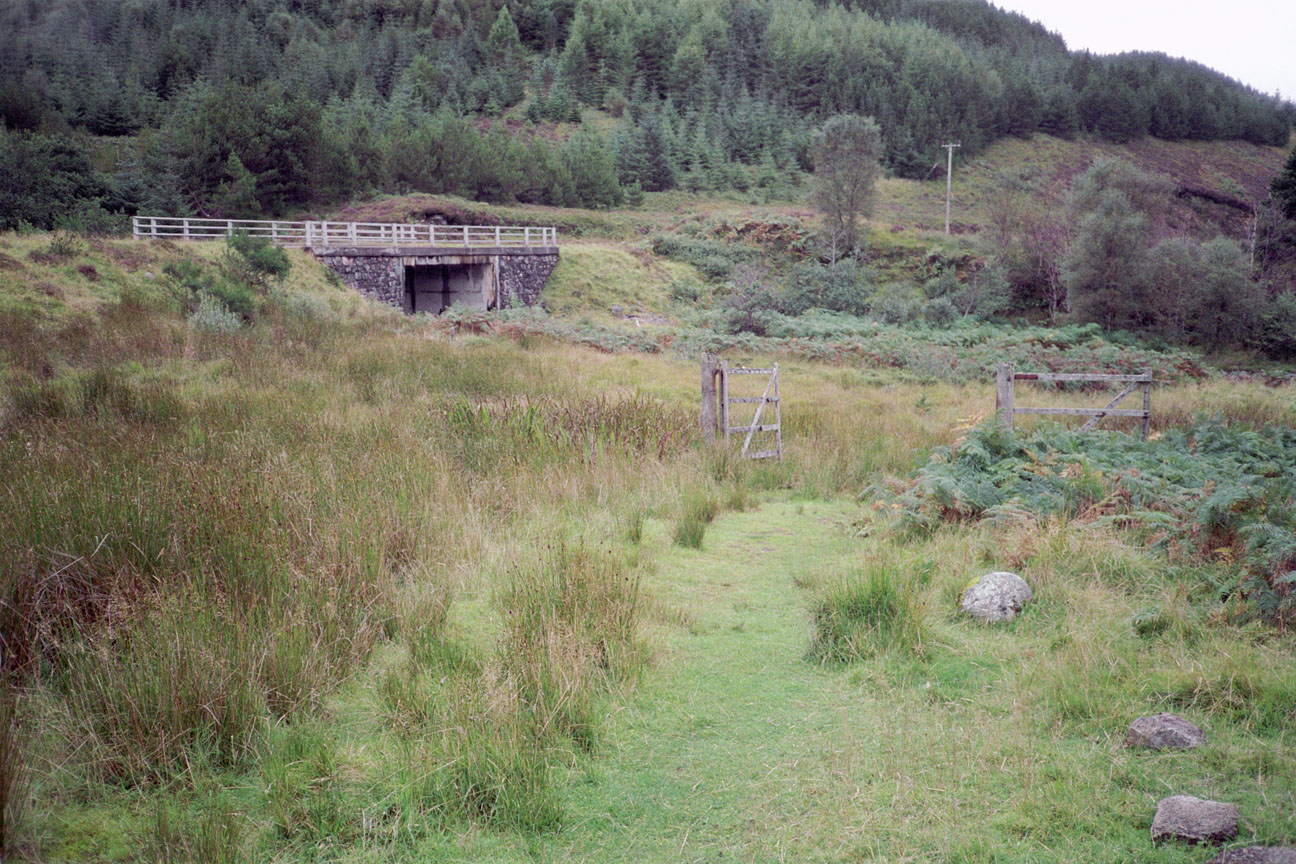
The gate opens onto the open glade of Camusfeàrna. This was the gate of "the old track"; the only path of vehicular ingress and egress in Maxwell's time. At upper right can be seen Maxwell's grave stone.

Gavin Maxwell's memorial. It stands on the precise location of the writing desk in Maxwell's study.

The inscription reads:
Beneath this stone,
the site of Camusfearna,
are buried the ashes of
GAVIN MAXWELL
b. 15th July 1914 d. 7th September 1969.
The triangular rock at left was placed by me.

Being bullied by the larger pine is the little rowan tree where Kathleen Raine cursed Gavin, and at the base of which was buried Edal, the otter who died in the fire that destroyed Maxwell's home in 1966.

Edal's cairn memorial.
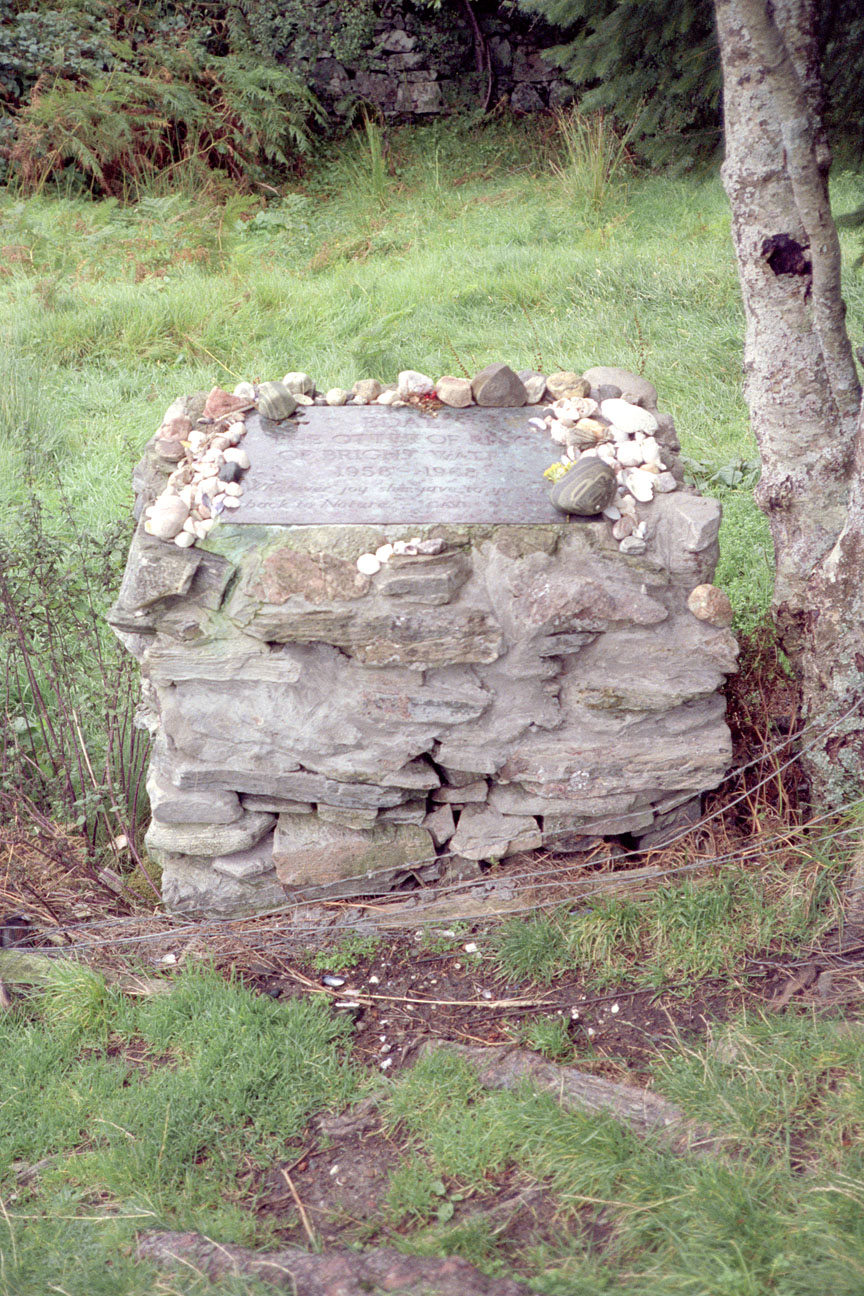
The inscription reads:
EDAL
THE OTTER OF RING
OF BRIGHT WATER
1958-1968
Whatever joy she gave to you give
back to Nature. GAVIN MAXWELL
My stones are the triangular one at upper right and the parallelogram-shaped one at left.

Near the bank of the burn, looking back from Edal's grave towards Maxwell's grave.

The burn as it first curves seaward, forming the "ring of bright water".
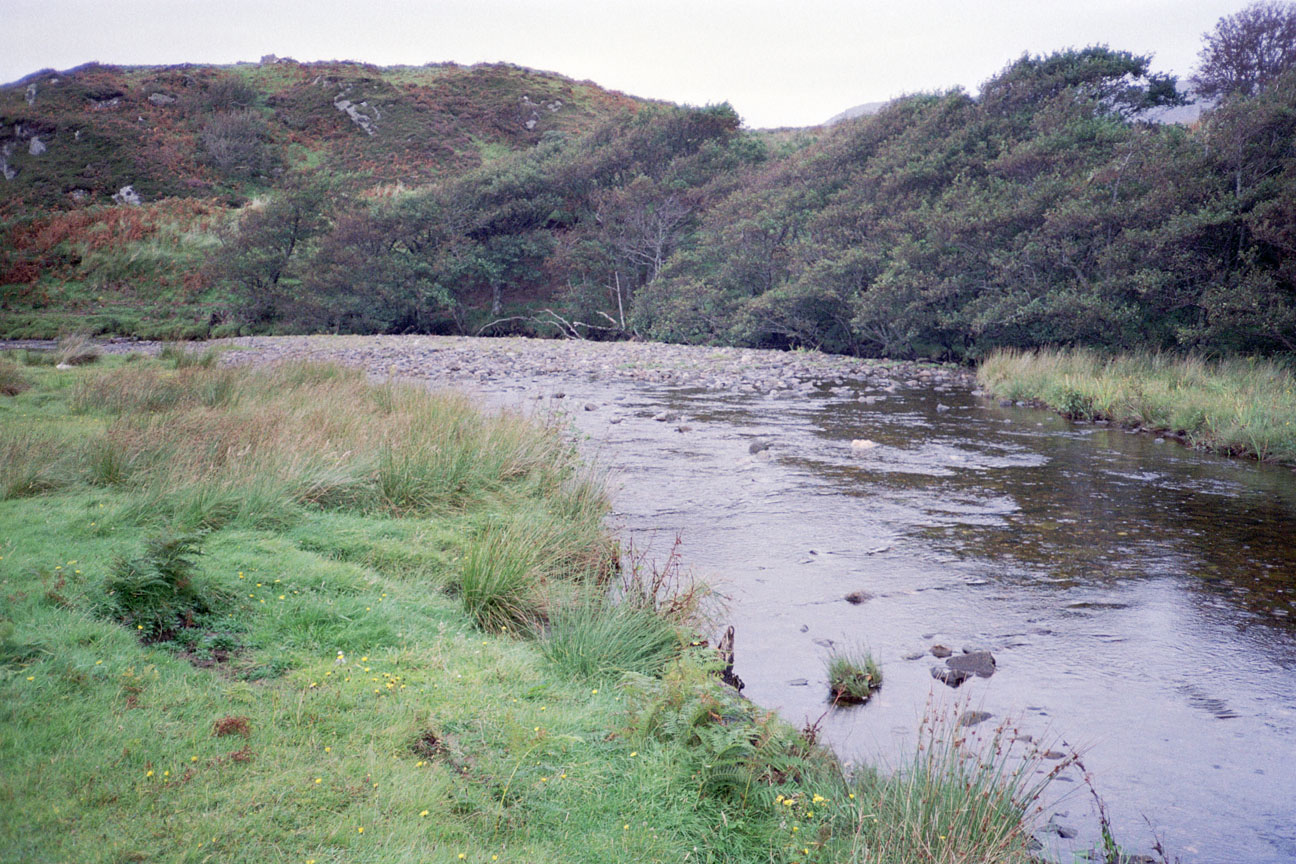
Farther along, looking upstream, the burn near its end.
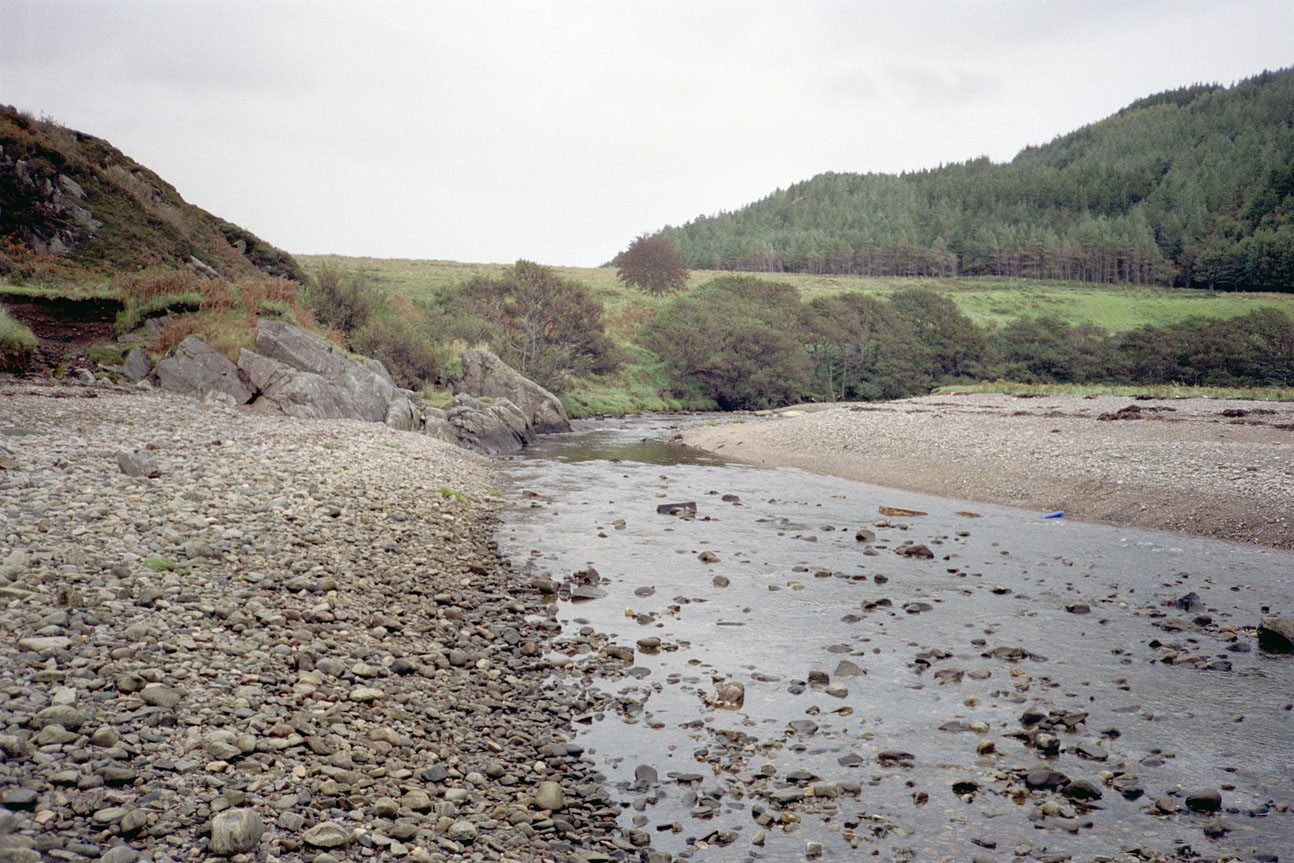
The burn flows into the sea, with one of the Sandaig Islands in the background.

In RoBW, Maxwell told of how he had made several pieces of furniture in his croft out of fish boxes that he found washed up on the shoreline near Camusfeàrna, so I had a real sense of history in the present when I found my very own fish box.

I used this one to be the seat of my home base during my visit. (You have no idea how much I wanted to take this fish box back to the US with me! But, of course, it simply wasn't possible.)
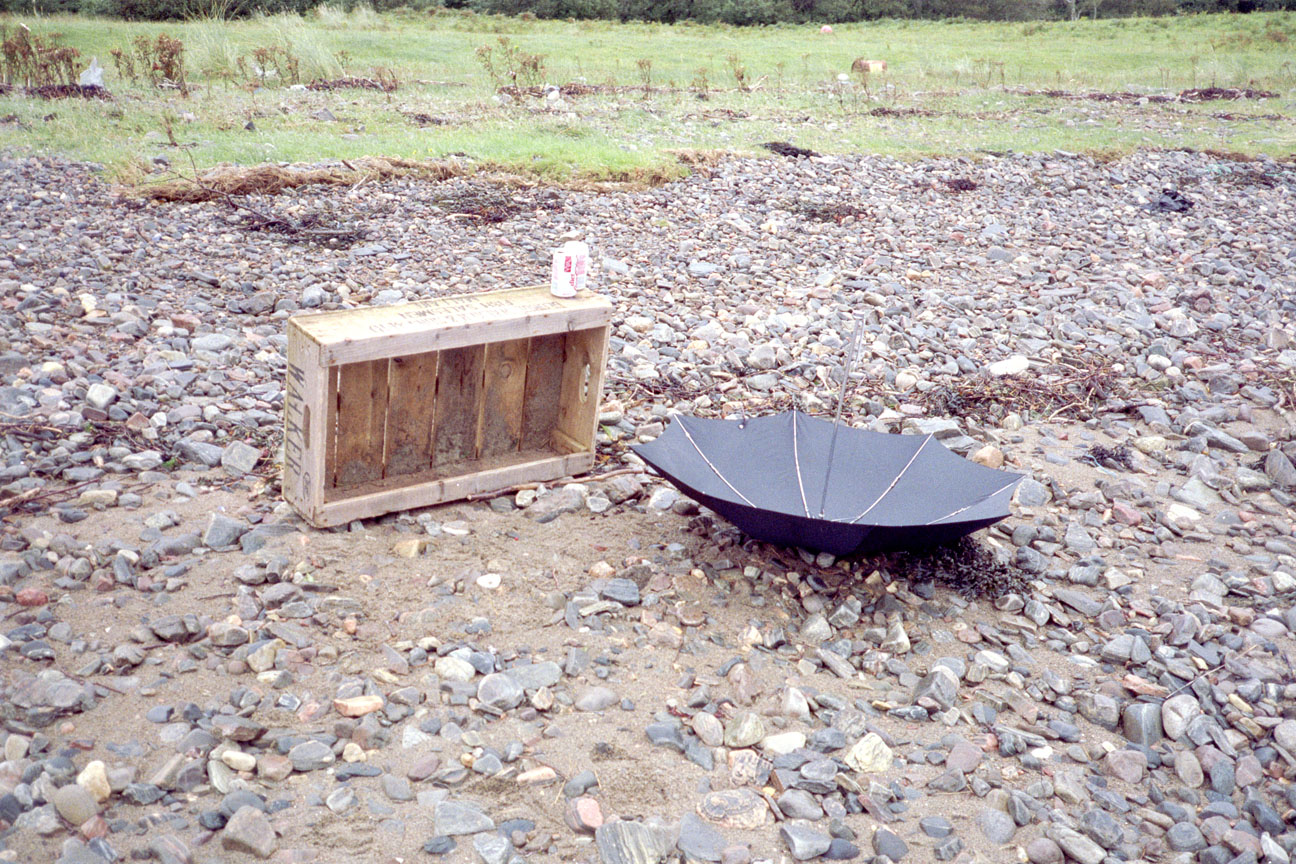
Looking back on the site of Camusfeàrna from my vantage point on the estuary. Beneath the low mound at centre are buried the broken ruins of Maxwell's croft.

Camusfeàrna viewed from the north meadow: Edal's grave and the rowan at left, Maxwell's grave, centre, and the property gate past the power pole at right.

Before I departed, I placed an offering at Edal's grave. I left photos of myself and my otters, and a handwritten note.

I put the message in a plastic bag and inserted it into a gap in the cairn, here. I've always wondered how long it remained there, and what ultimately became of it...
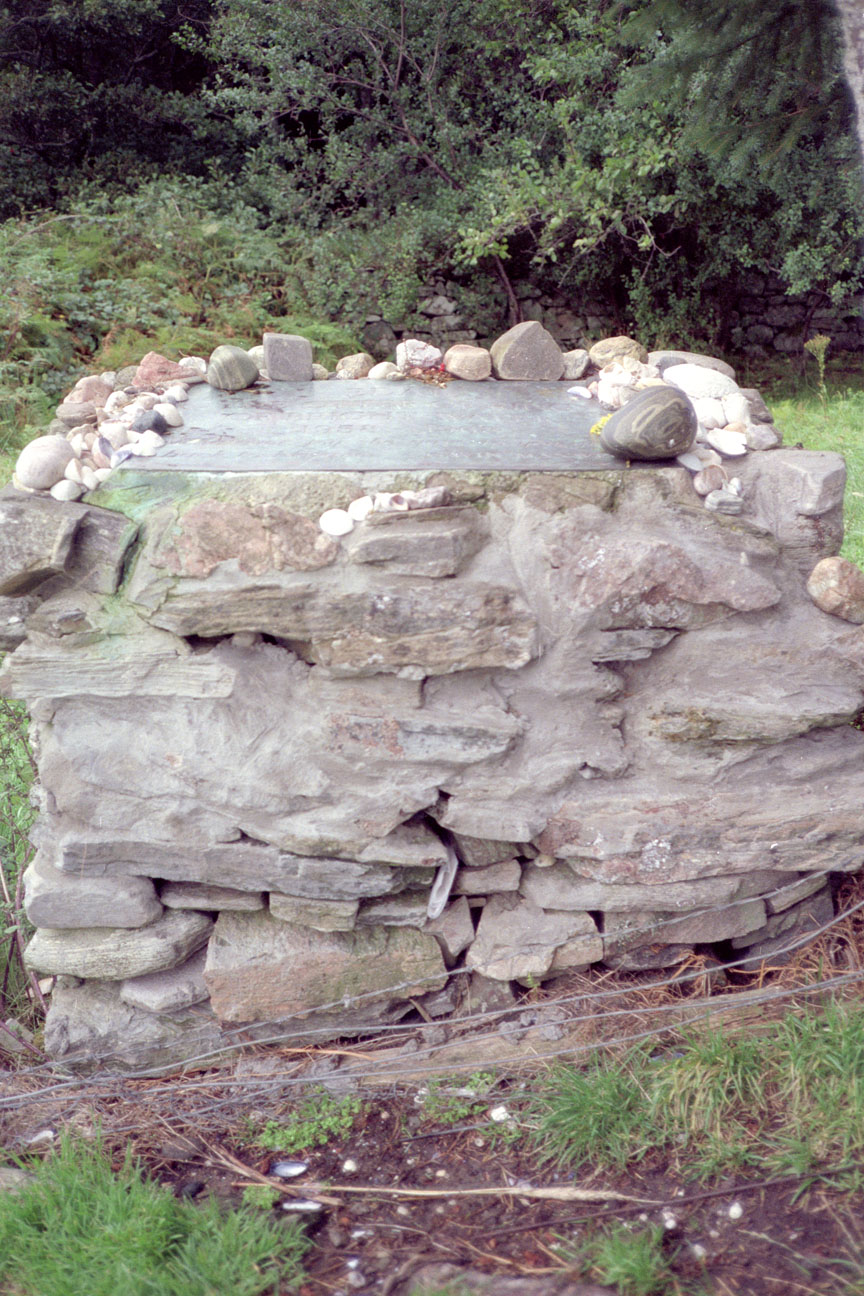
I mailed this postcard to myself the next day from Kyle of Lochalsh, commemorating my visit. On the bottom left of the post card is a smudge of dirt from the base of Edal's grave.


And finally, taken from the old track, a panorama of the Sound of Sleat, with the Isle of Skye in the background, the Sandaig Islands, and the site of Camusfeàrna at right partially obscured behind the trees.

There's a website giving directions to Camusfeàrna, whose actual place-name is Sandaig.
http://www.walkhighlands.co.uk/kintail/Sandaig.shtml
I followed the lower path, which intersects "the old track" along its way.
A view of the Sandaig Islands from the road above. During the years of Maxwell's residency, the property owner converted almost the entire area below the road into a forestry plantation, and over the years, the alien pines grew to completely obscure the stark highland terrain depicted in RoBW's photographs. Consequently, the area today is unrecognizable until one steps onto the actual site of Camusfeàrna itself.

All photos ©J Scott Shannon, all rights reserved.
This is one of the trailheads. It is opposite the site of Tormor, Maxwell's neighbours' house, mentioned in the dedication page of RoBW. In the background is the road bridge over the famous burn of the story.

The gate opens onto the open glade of Camusfeàrna. This was the gate of "the old track"; the only path of vehicular ingress and egress in Maxwell's time. At upper right can be seen Maxwell's grave stone.

Gavin Maxwell's memorial. It stands on the precise location of the writing desk in Maxwell's study.

The inscription reads:
the site of Camusfearna,
are buried the ashes of
GAVIN MAXWELL
b. 15th July 1914 d. 7th September 1969.
The triangular rock at left was placed by me.

Being bullied by the larger pine is the little rowan tree where Kathleen Raine cursed Gavin, and at the base of which was buried Edal, the otter who died in the fire that destroyed Maxwell's home in 1966.

Edal's cairn memorial.

The inscription reads:
THE OTTER OF RING
OF BRIGHT WATER
1958-1968
Whatever joy she gave to you give
back to Nature. GAVIN MAXWELL
My stones are the triangular one at upper right and the parallelogram-shaped one at left.

Near the bank of the burn, looking back from Edal's grave towards Maxwell's grave.

The burn as it first curves seaward, forming the "ring of bright water".

Farther along, looking upstream, the burn near its end.

The burn flows into the sea, with one of the Sandaig Islands in the background.

In RoBW, Maxwell told of how he had made several pieces of furniture in his croft out of fish boxes that he found washed up on the shoreline near Camusfeàrna, so I had a real sense of history in the present when I found my very own fish box.

I used this one to be the seat of my home base during my visit. (You have no idea how much I wanted to take this fish box back to the US with me! But, of course, it simply wasn't possible.)

Looking back on the site of Camusfeàrna from my vantage point on the estuary. Beneath the low mound at centre are buried the broken ruins of Maxwell's croft.

Camusfeàrna viewed from the north meadow: Edal's grave and the rowan at left, Maxwell's grave, centre, and the property gate past the power pole at right.

Before I departed, I placed an offering at Edal's grave. I left photos of myself and my otters, and a handwritten note.

I put the message in a plastic bag and inserted it into a gap in the cairn, here. I've always wondered how long it remained there, and what ultimately became of it...

I mailed this postcard to myself the next day from Kyle of Lochalsh, commemorating my visit. On the bottom left of the post card is a smudge of dirt from the base of Edal's grave.


And finally, taken from the old track, a panorama of the Sound of Sleat, with the Isle of Skye in the background, the Sandaig Islands, and the site of Camusfeàrna at right partially obscured behind the trees.

